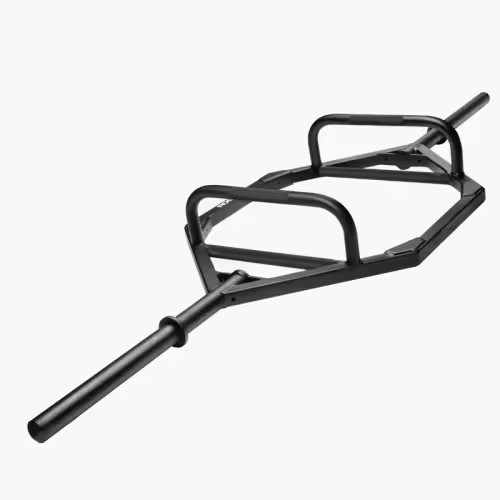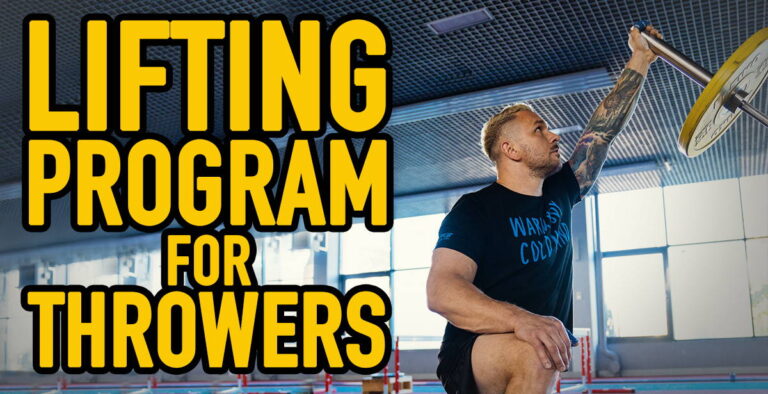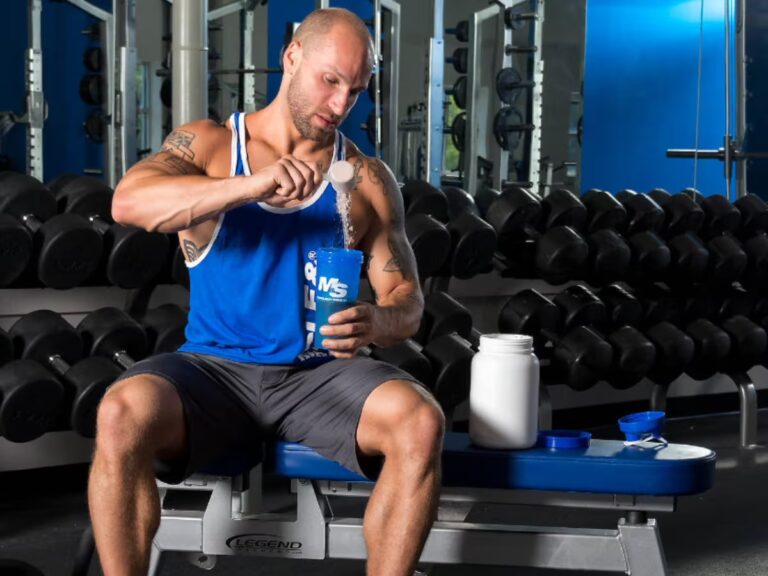Trap Bar Deadlift: How To Master It?
The deadlift is one of the most fascinating and useful exercises that anyone can do with the right equipment. We all know the traditional deadlift with a barbell, but the trap bar deadlift brings a different dimension to the movement. It is one of the more advanced forms of a workout that we will explore.
The trap bar deadlift is generally done using a hexagonal barbell, in which the person stands inside the bar or in the middle of the hexagon. The traditional deadlift movement is then performed from within the hexagon.
To ensure that you understand why this is such an impressive workout, we will dive deeper into some of the fundamentals and allow you to see how this trap bar deadlift could improve your overall workout functionality.
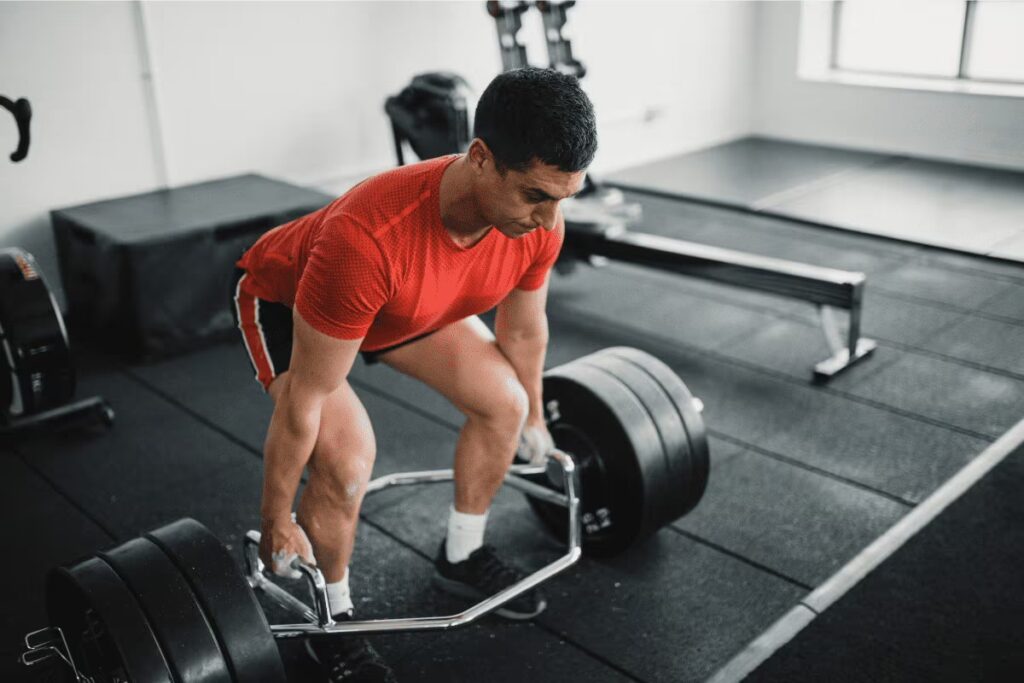
What Is A Trap Bar Deadlift?
Considering the traditional deadlift, which requires a barbell, the trap bar is slightly different. It is a hexagonal-shaped structure, which allows the person to stand inside the structure and grip the handles located on either side.
Instead of standing behind as you would with a traditional barbell, this enables you to slightly change how you perform the deadlift motion. Due to the nature of the hexagon used for the trap bar deadlift, it is slightly different from your traditional movement. You have more of a squat movement, which puts more emphasis on the quads.
What Muscles Do Trap Bar Deadlift Work?
To get an even better understanding of the trap bar deadlift, we should look at what does trap bar deadlift work.
- Glutes: Much like the traditional deadlift, the trap bar also targets the glutes. These are often activated when you have the bar in hand and stand up with it.
- Hamstrings: The hamstrings are also activated once you stand up and often allow you to gain the burst of power needed to lift the bar.
- Quadriceps: For the trap bar deadlift, plenty of emphases would be placed on the quadriceps when it comes to the movement.
- Erectors: The erectors would also be strengthened during the use of the trap bar for your deadlifts.
- Trapezius And Back: Finally, the traps and back would be activated in the upper body. This would be the muscles engaged when you start lifting.
As you can see, the trap bar deadlift is a very functional exercise and there are numerous muscles used in trap bar deadlift movements. It is one of the most powerful workouts that will give you a full lower-body workout and target the essential muscles needed for powerlifting.
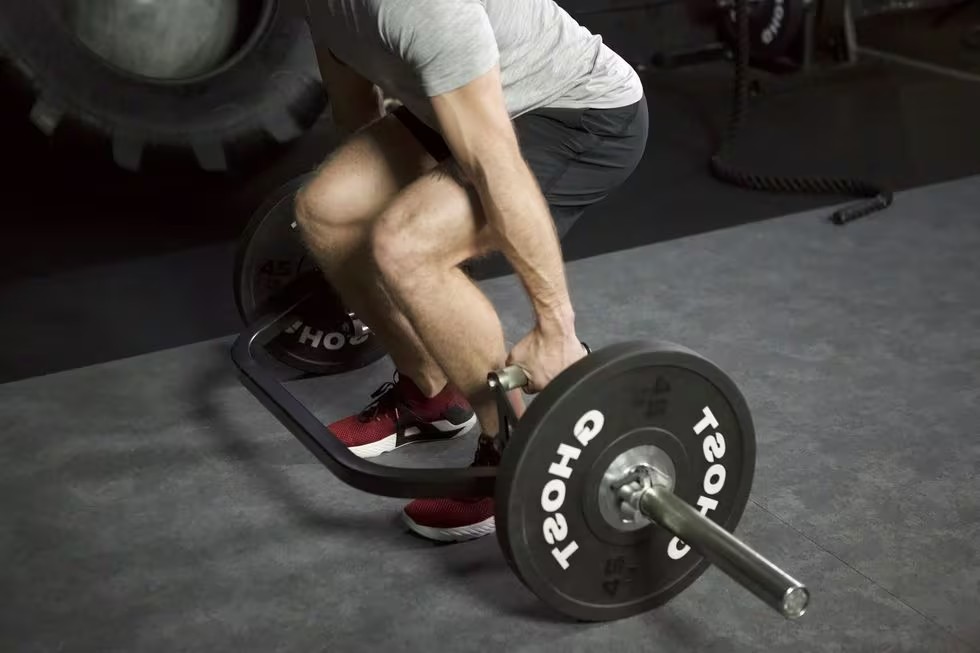
Trap Bar Deadlift Benefits
If you are still stuck with the traditional deadlift that is fine. However, the trap bar is a great addition that would help you target the same muscles differently. If you need some convincing to find out if the trap bar deadlift is for you, the following should help you with this decision. Here are the benefits of trap bar deadlift movements:
✅ Targets The Back And Leg Muscles
One of the best ways to maximize your workouts would be when you ensure as many large muscle groups are targeted as possible. The t bar deadlifts fall under this category and it targets both the legs and the back muscles. You will essentially be shifting the tension between the legs and the back muscles.
Not only does this help with improving your muscle strength, but it also ensures that you can effectively train more muscle groups in less time.
✅ It Offers A New Stimulus
We are all bound to specific workout plans when we hit the gym. However, bringing in the occasional novelty is a great way to help you improve your overall workout routine. Whilst there are a few technical differences between the traditional and trap bar deadlifts, they can be substituted with one another.
If you are lost for exercise and you want to introduce a novelty without fully changing your routine, the trap bar deadlift is a sound alternative. Just make sure that you understand some of the technical differences.
✅ It Is a Functional Movement
In many workout routines, you have static movements and functional movements. Functional movements aim to target more aspects of the body. The trap bar deadlift is one of the more functional movements that you can do and also symbolizes a “natural movement” like lifting groceries off the floor.
One of the main benefits is that the movement would symbolize the individual lifting something off the floor. It also teaches the right lifting technique to ensure that the spine does not get hurt in any specific way.
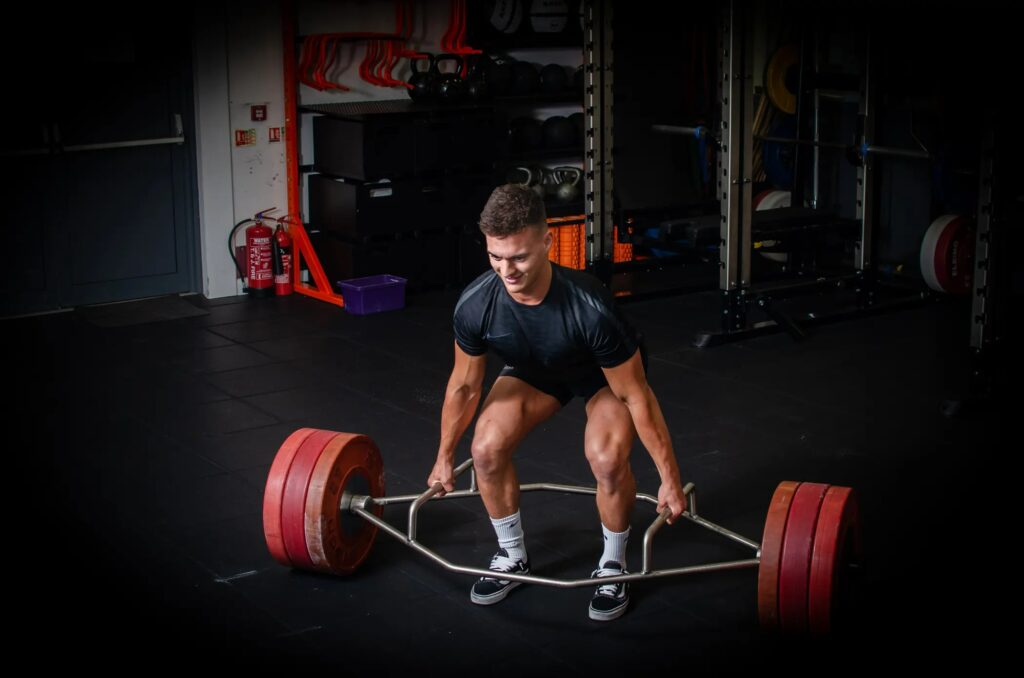
✅ Lifting Heavier Weights
Another one of the main features that you would need to focus on when it comes to the trap bar deadlift is the weights you are lifting. Whilst traditional deadlifts would enable you to lift a specific weight off the floor, trap bar deadlifts enable you to lift even more weight.
However, the hex often has low and high handles that you will need to choose from. When using the high handles, you don’t need to bend down as low and this enables you to lift even more weight than you would with the lower handles.
✅ Less Stress On The Lumbar Spine
One of the downsides of the traditional deadlift is that it would put plenty of stress on the posterior chain. This could often result in lower back injuries that make it painful in the longer run, especially if you already have lower back issues.
One of the benefits of the trap bar deadlift is that it would remove the stress from the lower back and place more emphasis on the legs. This would not only assist in lifting more weights but also reduces the strain on the lower back.
✅ Almost Everyone Can Do It
I did mention the fact that the trap bar features high and low handles, which can change the load and the strain on your body. If you have any issues with lifting from a very low level, you can switch between the high and low handles of the trap bar. This would not only offer you more versatility but also adjust to make it easier for some lifters.
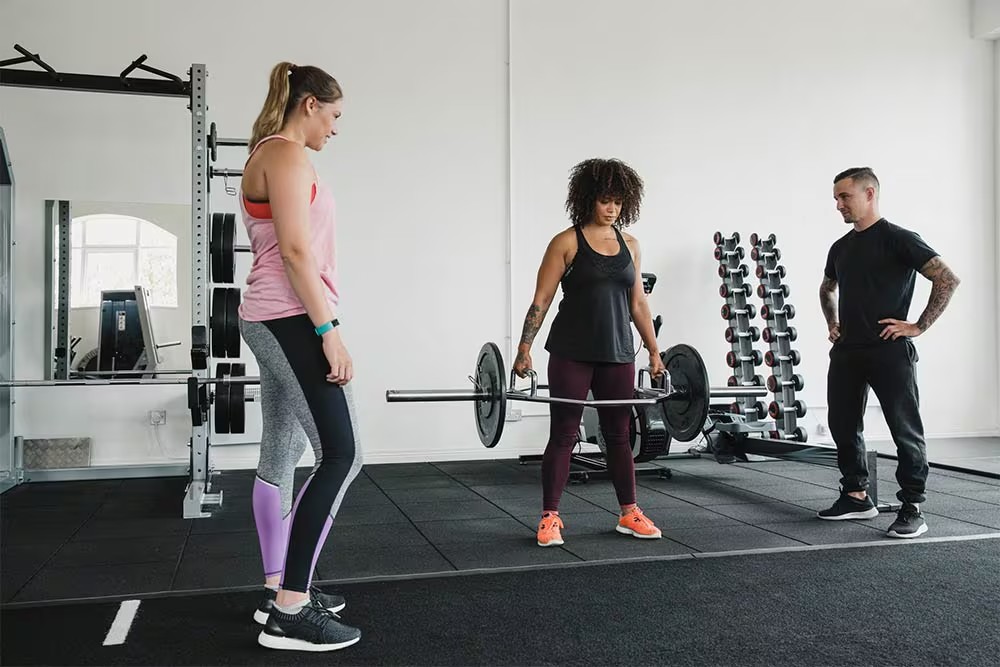
Possible Drawbacks Of The Trap Bar Deadlift
Whilst the trap bar might sound like the best option and you could be inclined to immediately make the change, there are a few things you should also keep in mind when you deadlift with trap bar:
1. Fewer Variations
Whilst the deadlift is a great exercise, the hex trap bar deadlift does not offer you the same versatility you would have when it comes to the barbell. The traditional barbell is one of the best pieces of training equipment and it would allow you to perform more exercises.
2. Limited Grip Strength Training
When it comes to working out, grip strength is one of the most important parts of the exercise. However, the trap bar does not put as much strain on your grip and the way you hold the bar. You might need to supplement this with additional exercises that can encourage you to focus on the grip that you use.
Who Should Deadlift With A Trap Bar?
The trap bar is one of the most functional training tools when it comes to working out. Not only does bring a new variation, but specific people would do much better when using the trap bar than they would with a traditional barbell.
It is best to use the trap bar if you are suffering from lower back issues. This would move more of the emphasis to the legs, which would reduce some of the strain on the lower back. Additionally, those looking to add some variations to their traditional deadlift. The trap bar deadlift would enable you to add more additional weight, which could help with muscle overloading as well.
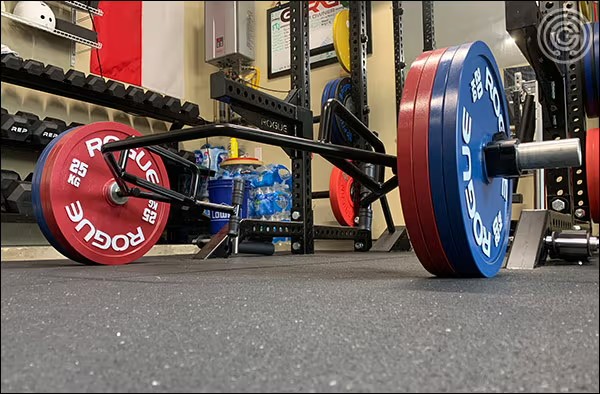
How To Deadlift With A Trap Bar
Now that you have seen all the different benefits and a few of the drawbacks when it comes to the trap bar, you will need to ensure that you know how to deadlift with the trap bar. In the following section, I will explain how you can go about deadlifting with the trap bar and what you should do:
1. Step Inside
The first thing you would want to do is to set up the trap bar in front of you. Once you have it set up in front of you, you can step inside the trap bar. Your feet should be in line with the sleeves, which would be about shoulder-width apart.
2. Gripping The Bar
You can choose to use either the high or the lower handles of the trap bar when you grip the bar. To grip the bar, you should squat down to ensure that you can grip the handles effectively.
3. Lifting The Bar
When lifting the bar, you want to retract your shoulders back and down again. You should contact your core muscles to create some stability and balance. Upon lifting, you will drive your feet into the ground, engaging the upper leg muscles to push yourself up from the ground.
Once the bar is parallel with the knee, you should bring the hips forward and squeeze out the glute muscles. However, you should also be careful not to hyperextend the spine.
4. Finishing
Once you are done, you can either slowly drop the bar back down, whilst retaining the grip you have on the bar. Alternatively, you should drop the bar down. I would not recommend dropping the trap bar down due to the risk of falling. The bar might hit your legs or roll on the ground and you will be trapped on the inside of the bar.
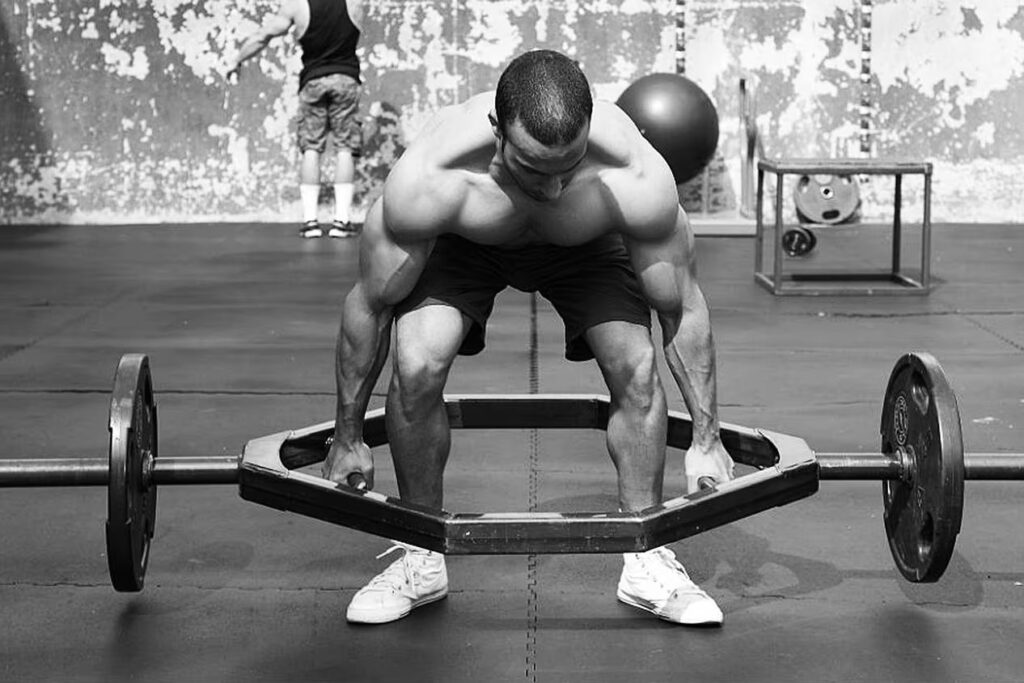
Trap Bar Deadlift Variations
When it comes to the trap bar, there are a few additional variations that you can also do. Much like other free weight exercises, the trap bar variations would be great for targeting different areas or putting more strain on specific parts of your body. Here are a few we would recommend:
1. Low Handle Trap Bar Deadlift
Once you have mastered the standard movement of the trap bar deadlift, you might be inclined to try the low handlebar deadlift. Many lifters would progress to these variations once they have mastered the standard version of the movement.
The low-handle trap bar deadlift would require you to go down much lower and this will add more emphasis on your legs. However, it also requires more mobility in an attempt to dip lower. This will work the same muscles as the traditional version, but with a bit more strain on the muscles.
2. Heels-Elevated Dumbbell Squat
If you have ever attempted the dumbbell squat, you must have seen how frustrating it could be to perform. However, the trap bar allows you to perform this workout. It offers more rigidity due to the solid bar being used.
For this variation, you would elevate the heels on something and grip the bar on the high or low handlebar. Once you have it gripped on the high or the low handlebar, you will keep your legs straight and push up with your knees. Not only will this target the upper leg muscles, but it will also enable you to strengthen the knees.
When/Why To Use The Trap Bar Instead Of The Regular
The trap bar is one of the most useful additions to your workout routine and it can effectively help you to improve your strength. However, the traditional deadlift bar is still the more popular option, but there are certain situations when you would rather want to use the trap bar.
It would be best to use the trap bar when you are suffering from lower back pain and issues with your back muscles. This would reduce the overall strain on the lower back and help you to put more of the focus on the upper thigh muscles.
Additionally, someone who wants to increase the weight they are lifting would also want to use the trap bar in an attempt to increase the overall weight.
Deadlift With Trap Bar Vs Regular Bar
When it comes to the trap bar vs the deadlift bar, you will notice that there are plenty of similarities. These similarities would be the muscles being trained. However, there are a few slight differences when it comes to where the emphasis is being placed. For the trap bar, the emphasis is placed more on the quadriceps muscles and the grip would be different.
Additionally, the trap bar removes some of the strain on the lower back, which would make it more comfortable for those suffering from lower back issues.
Trap Bar We Would Recommend
If you have decided that you are going to use the trap bar, there are a few important things to keep in mind as well. You will need to make sure that you choose the best trap bar for your needs and this would allow you to get the best performance.
The Rogue TB-2 Trap Bar is one of the best options on the market today. It features one of the most versatile features and will offer you a 25% reduction in weight due to the SCH 80 Pipe Olympic Sleeves. The comfortable design would enable you to easily grip [the top or the lower handles and perform various exercises like the trap bar deadlift and the Olympic shrug exercise. You can easily develop a solid workout plan by using the bar to ensure overall functionality.
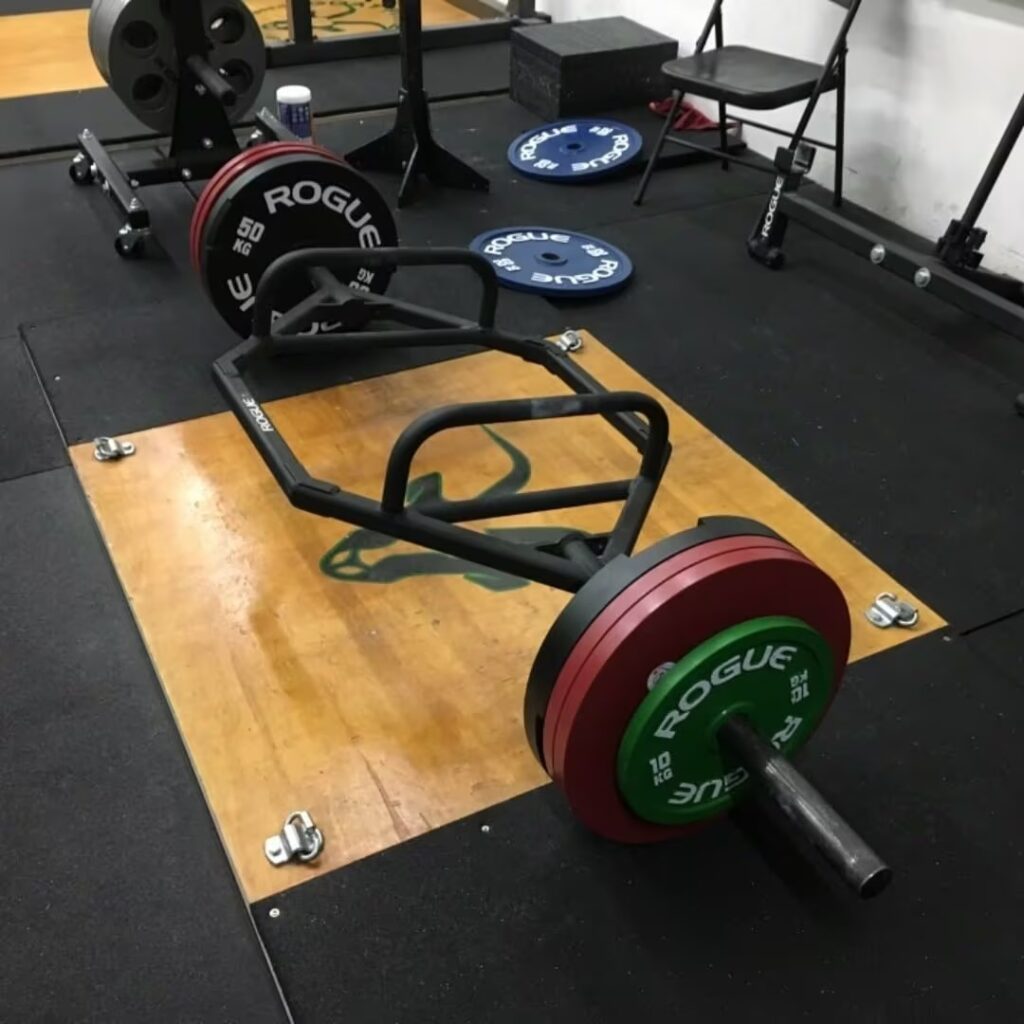
FAQ
Is A Trap Bar Good For Deadlifts?
The trap bar is one of the best things you can use when it comes to performing deadlifts. The design of the bar would enable you to comfortably grip the handles and perform a deadlift without as much strain and pain on the lower back.
Is Trap Bar Deadlift Cheating?
The trap bar deadlift is certainly not cheating. Yes, you can find that you will lift the heavier weight when using it instead of the traditional barbell, but you will also see that you have far less pain when it comes to using the bar.
Is A Trap Bar Deadlift Better Than Squats?
The trap bar deadlift might put more emphasis on the quad muscles than it would put on the lower back, but it will not replace the squat. The squat focuses more predominantly on the upper leg muscles and works better for hypertrophy and strength. We would not recommend that you replace the squat with a trap bar deadlift.
Conclusion
If you are looking for a more convenient way to add deadlifts to your workout routine, the trap bar deadlift is one of the best ways you can do this. You can use the trap bar deadlift to ensure that you improve your overall workout routine and reduce some of the strain on your lower back as well. We would love to read some of your comments and find out if you prefer the traditional or the trap bar deadlift for mass.
Also read:
- Hex Bar Deadlift vs Barbell Deadlift
- Trap Bar Exercises
- Best Hex Bars
- How Much Does a Trap Bar Weigh
- Best Barbells for Functional Fitness
- Olympic vs Standard Barbell
- Best Powerlifting Barbell
- Bushing vs Bearing Barbell
- Olympic Barbell Dimensions
- Barbells vs Dumbbells
References:
- Trap Bar Deadlifts: Benefits, Muscles Worked, and More // Inspire USA Foundation: https://www.inspireusafoundation.org/trap-bar-deadlifts/
- Quadriceps muscle activity during commonly used strength training exercises shortly after total knee arthroplasty // NCBI: https://www.ncbi.nlm.nih.gov/pmc/articles/PMC6606685/
- Electromyographic Comparison of Barbell Deadlift, Hex Bar Deadlift, and Hip Thrust Exercises // NCBI: https://pubmed.ncbi.nlm.nih.gov/28151780/
- An Examination Of Muscle Activation And Power Characteristics While Performing The Deadlift Exercise With Straight And Hexagonal Barbells
- An Examination Of Muscle Activation And Power Characteristics While Performing The Deadlift Exercise With Straight And Hexagonal Barbells // Research Gate: https://www.researchgate.net/publication/292437161
- Effect of a Hexagonal Barbell on the Mechanical Demand of Deadlift Performance // NCBI: https://www.ncbi.nlm.nih.gov/pmc/articles/PMC5969032/
Why Trust Us?
With over 20 years in Olympic Weightlifting, our team does its best to provide the audience with ultimate support and meet the needs and requirements of advanced athletes and professional lifters, as well as people who strive to open new opportunities and develop their physical capabilities with us.
By trusting the recommendations of our certified experts in coaching, nutrition, dietology, and sports training programming, as well as scientific consultants, and physiotherapists, we provide you with thorough, well-considered, and scientifically proven content. All the information given in the articles concerning workout programming, separate exercises, and athletic performance, in general, is based on verified data. We ensure that you can rely on our professionals’ pieces of advice and recommendations that can be treated as personalized ones which will benefit you and fully meet your needs.
The product testing process is described in more detail here
Author: Ihor Shymechko
Pro Olympic Weightlifter, Coach
Best Results: Snatch – 208 kg,
C&J – 240 kg
Ihor has been a professional weightlifter since 1996, boasting over two decades of competition experience. His notable achievements include clinching the European Championship in 2009 and securing a silver medal in the 105kg division at the Senior World Championships in 2011. Ihor represented his country in the 2008, 2012, and 2016 Summer Olympics. After retiring from competitive weightlifting, he transitioned to coaching, leveraging his vast experience to guide athletes who now compete on both national and international stages.

